Ultimate Septic System Inspection Checklist for Homeowners
When it comes to maintaining your home’s septic system, having a reliable inspection checklist is crucial. A well-maintained septic system ensures the health and safety of your household while preventing costly repairs. Below, we’ll provide you with a detailed and unique guide to septic system inspections, addressing all the vital elements you need to be aware of.
Key Takeaway
Having a structured septic system inspection checklist can save you time, money, and stress. This checklist helps you assess the overall health of your system, identify potential issues early, and maintain compliance with local regulations. It’s your go-to guide for ensuring your septic system operates efficiently.
Why Septic System Inspection Checklist Is Essential
Regular inspections of your septic system are not just recommended; they’re indispensable. These inspections help you:
- Prevent costly repairs: Catching issues early can save you thousands in potential repair costs.
- Maintain system efficiency: A well-maintained system works better and lasts longer.
- Ensure health and safety: Proper waste management is crucial for the health of your household and the environment.
- Meet regulations: Compliance with local laws often requires regular inspections.
Key Components of a Septic System Inspection
Visual Inspection
The visual inspection is the first step toward understanding your septic system’s condition. This involves checking various components:
- Tank Lid and Riser: Ensure they are securely in place and not damaged.
- Drainfield: Look for any signs of surface water or lush vegetation, which could indicate system failure.
- Pipes and Connections: Check for any visible leaks or damage.
Sludge and Scum Measurement
Measuring the sludge and scum levels inside your septic tank is critical. This helps determine if the tank needs pumping.
| Tank Size (Gallons) | Frequency of Pumping |
|---|---|
| 1,000 | Every 3-5 years |
| 1,500 | Every 4-6 years |
| 2,000 | Every 5-7 years |
Water Flow Test
A water flow test can help you understand if your drainage system is functioning correctly. Run water through your system and observe how it drains.
Checking for Leaks
Leaks can cause significant issues in your septic system. Inspect all pipes and connections for signs of leakage.
Using Technology for Inspections
Video Inspections
Modern technology allows for video inspections, providing a real-time view inside your septic tank and pipelines. This method is highly effective in identifying hidden issues.
Digital Monitoring Systems
Some systems come equipped with digital monitors that alert you to potential problems, such as high sludge levels or leaks.
Common Problems Found During Inspections
Roots Infiltration
Tree roots can penetrate the septic tank or pipes, causing blockages or leaks. Regular inspections can identify and address these issues before they become severe.
Tank Damage
Cracks or damage to the septic tank can lead to leaks and groundwater contamination. Inspections will help you identify these problems early.
Drainfield Issues
A failing drainfield can cause surface water accumulation and poor drainage. Regular checks will help ensure your drainfield is functioning correctly.
How to Prepare for a Septic System Inspection

- Locate System Components: Ensure you know where your tank, pipes, and drainfield are situated.
- Gather Documentation: Have any previous inspection reports or system plans handy.
- Clear Access: Make sure inspectors can easily access all parts of your septic system.
Pre-Inspection Checklist
- Verify the septic system information and locate all components.
- Determine the type of septic system you have.
- Identify any areas where issues were previously noted.
Post-Inspection Actions
Once your inspection is complete, there are several steps you should take:
- Review the Report: Carefully read through the inspection report to understand the findings.
- Schedule Repairs: If any issues were identified, schedule necessary repairs promptly.
- Maintain Records: Keep a record of all inspections and repairs for future reference.
Best Practices for Septic System Maintenance

Regular maintenance is key to extending the life of your septic system. Here are some best practices:
- Regular Pumping: Stick to a pumping schedule based on your tank size and household usage.
- Proper Waste Disposal: Avoid flushing non-degradable items or chemicals down the toilet.
- Water Conservation: Conserve water to reduce the load on your septic system.
Maintenance Checklist
- Pump the septic tank every 3-5 years.
- Inspect the system annually.
- Avoid using chemical drain cleaners.
- Conserve water to reduce system load.
Useful Tools for Septic System Inspections
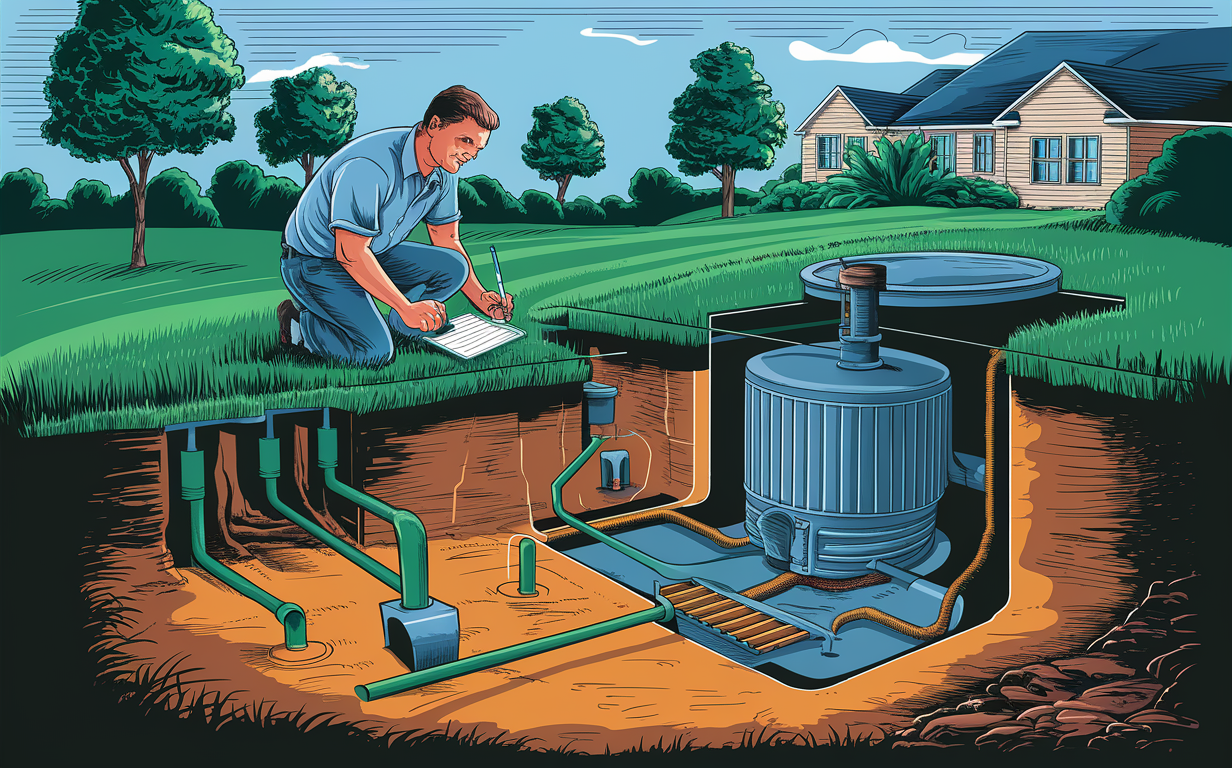
Inspection Tools
- Sludge Judge: Measures the depth of sludge in the septic tank.
- Digital Cameras: Used for video inspections.
- Water Flow Meters: Monitor the flow rate and identify potential drainage issues.
Apps and Software
Several apps and software tools can help you maintain records and schedule inspections. Look for platforms that offer customizable checklists and real-time monitoring.
FAQ
Q: How often should I inspect my septic system? A: Ideally, you should inspect your septic system annually and pump it every 3-5 years, depending on the tank size and household usage.
Q: What should I do if my inspection reveals problems? A: Schedule necessary repairs immediately to prevent minor issues from becoming major problems.
Q: Can I perform a septic system inspection myself? A: While some basic checks can be done by homeowners, it’s best to hire a professional for a comprehensive inspection.
Conclusion
A well-structured septic system inspection checklist is essential for maintaining the efficiency and longevity of your septic system. Regular inspections can prevent costly repairs, ensure compliance with local regulations, and provide peace of mind. By following this guide, you’ll be well-equipped to keep your septic system in top shape.
For more information or to schedule an inspection, contact Texway Wastewater Services at (817) 889-4007. We offer comprehensive inspection and maintenance services to keep your septic system running smoothly.
Additional Resources
Septic Tank Pumping Frequency Based on Household Size
| Household Size | Tank Size (Gallons) | Recommended Pumping Frequency |
|---|---|---|
| 1-2 People | 1,000 | Every 3-5 Years |
| 3-4 People | 1,500 | Every 3-4 Years |
| 5+ People | 2,000 | Every 2-3 Years |
- Septic system inspections are crucial for maintaining the functionality and longevity of the system. According to the Environmental Protection Agency (EPA), approximately 20% of homes in the United States use septic systems, and regular inspections can help prevent costly repairs or replacements (EPA: Septic Systems and Alternatives).
- The American Society of Home Inspectors (ASHI) recommends that septic systems be inspected every three years in areas with normal usage, and every one to three years in areas with heavy usage (ASHI: Septic Systems Inspections).
- During a septic system inspection, the inspector will check various components of the system, including the septic tank, the distribution box, the drainfield, and the pumps (if applicable) (EPA: Septic Systems for Homeowners and Inspectors: What You Need to Know).
- The National Association of Realtors (NAR) reports that 50% of home buyers do not request a septic system inspection, but it is a critical component of the home buying process, as septic system failures can lead to costly repairs and health hazards (Realtor.com: Septic System Inspections: Why They Matter).
- The average cost of a septic system inspection ranges from $250 to $700, depending on the location and complexity of the system (SFGate: How Much Does a Septic System Inspection Cost?).
Common Septic System Problems and Solutions
| Problem | Symptoms | Solution |
|---|---|---|
| Root Infiltration | Slow drainage, blockages | Root removal, pipe replacement |
| Tank Cracks | Wet spots, foul odors | Tank repair or replacement |
| Drainfield Failure | Surface water, lush vegetation | Drainfield restoration or relocation |
By following this comprehensive guide, you’ll be well on your way to maintaining a healthy and efficient septic system. Remember, the key to a long-lasting septic system lies in regular inspections and timely maintenance.
Make use of this checklist to stay ahead of any potential issues and ensure your system operates at its best.



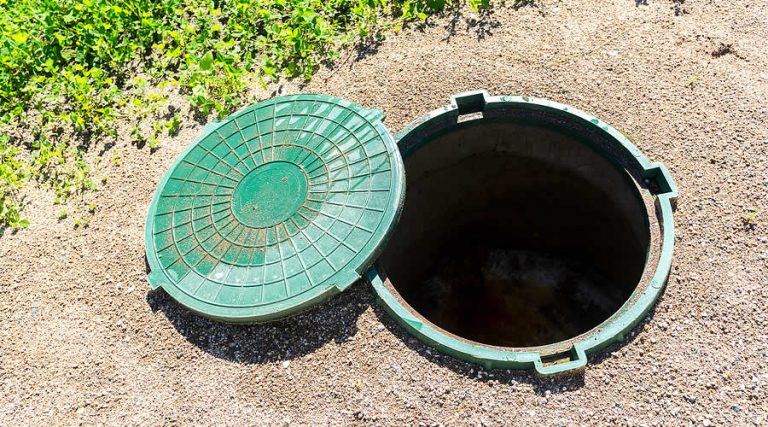
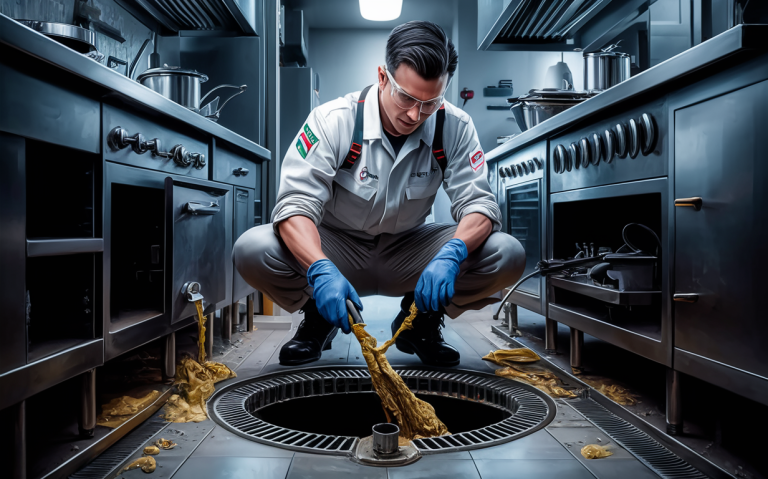
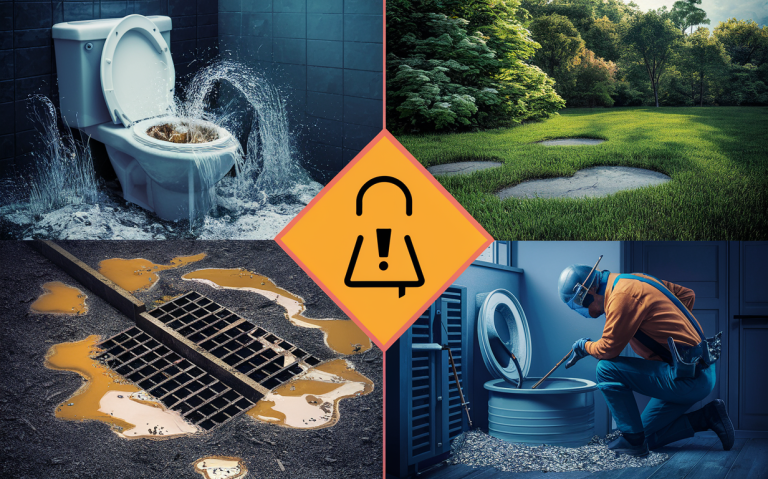
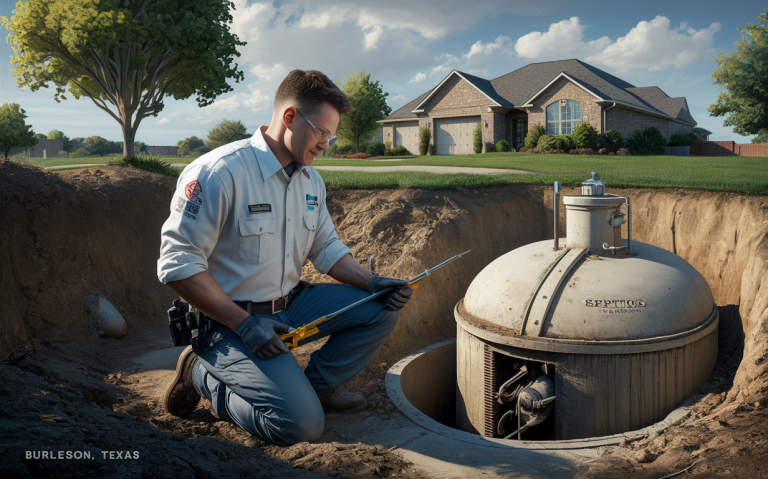
 Texway Wastewater Services is a septic, wastewater, and excavation company based out of Burleson, Texas and serving the surrounding areas. We specialize in
Texway Wastewater Services is a septic, wastewater, and excavation company based out of Burleson, Texas and serving the surrounding areas. We specialize in